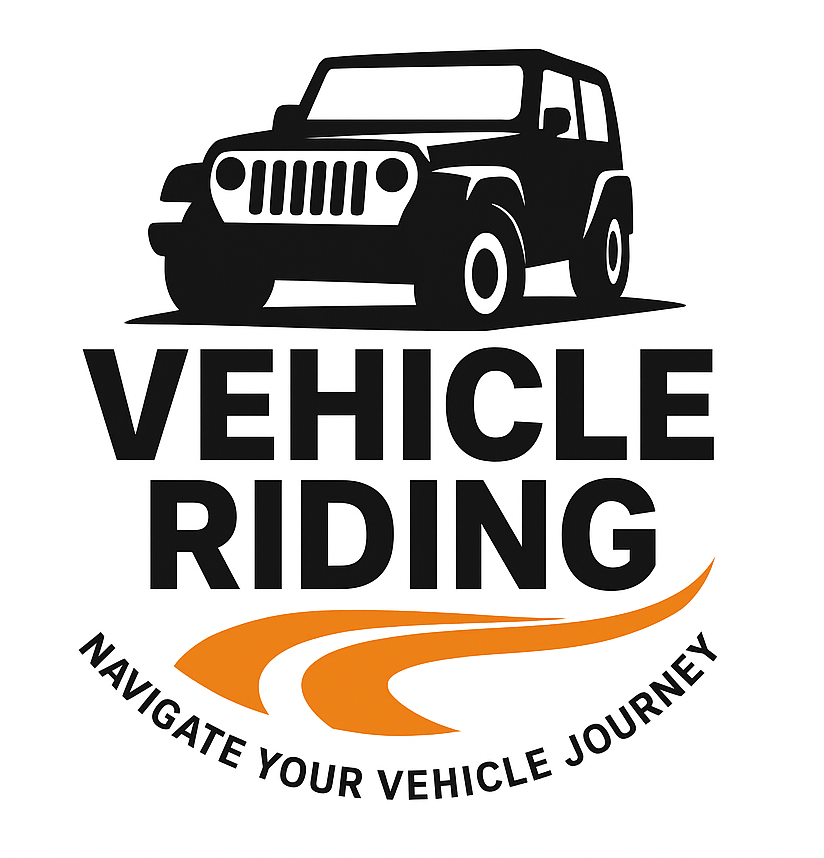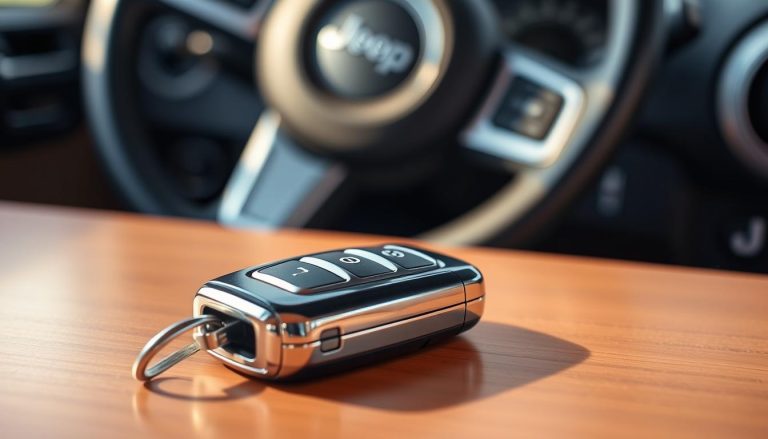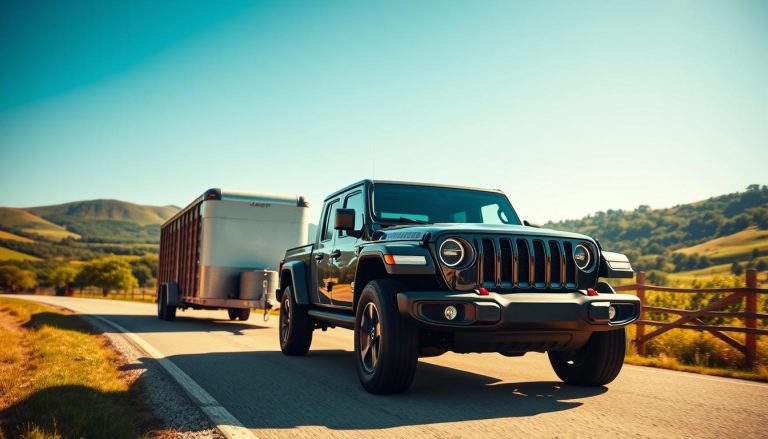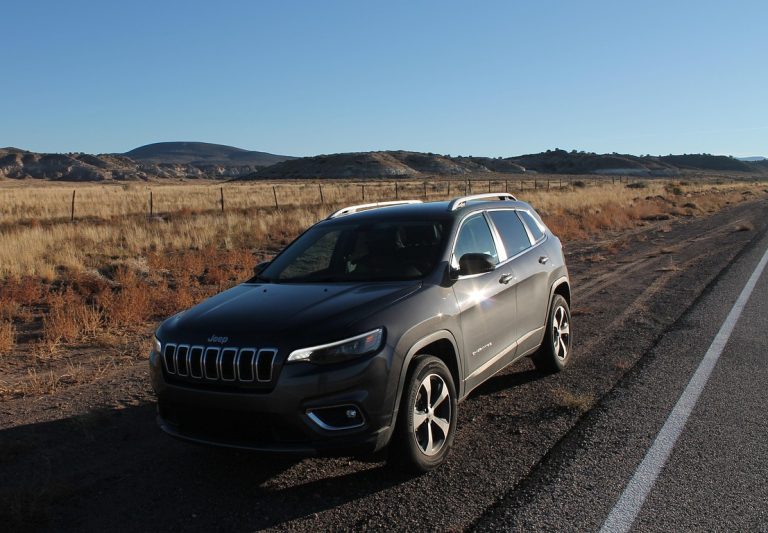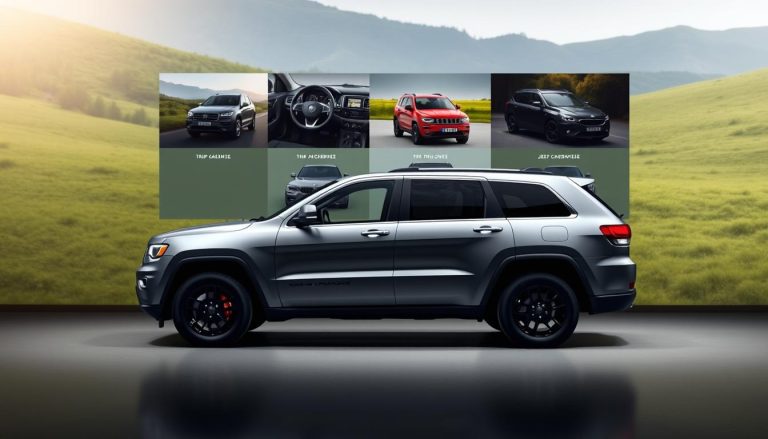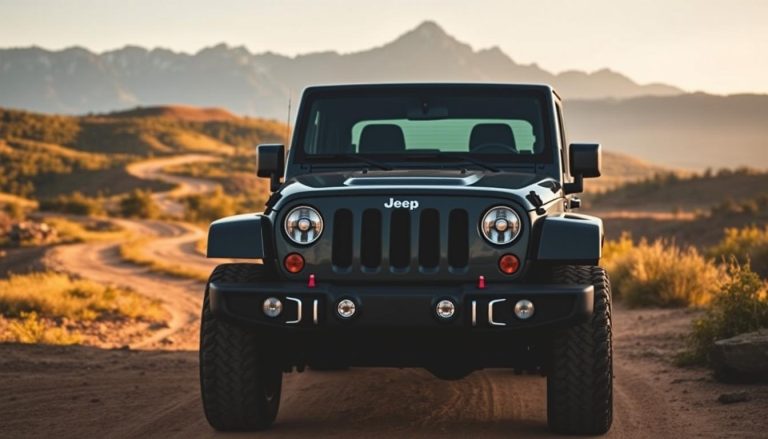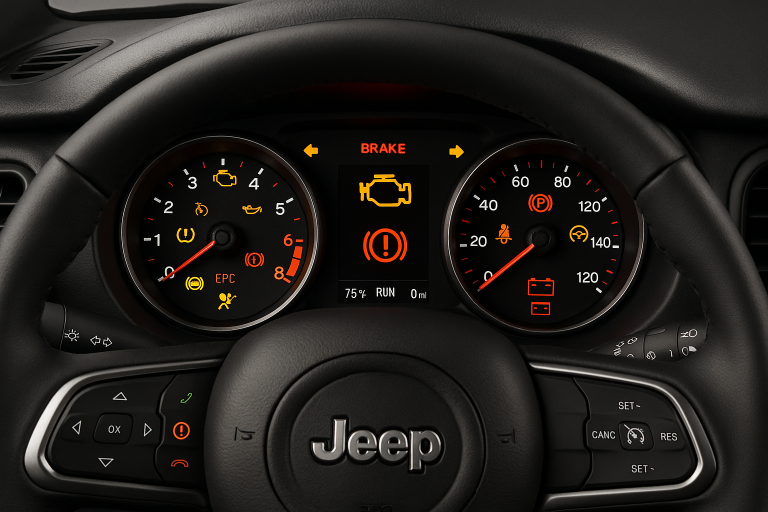Engage 4WD in Your Jeep: Simple Steps
Learning to engage your Jeep’s four-wheel drive boosts your off-road fun and driving safety. This article gives you easy steps for jeep 4WD activation. It will help you handle all kinds of terrains safely. Getting to know these steps enhances your Jeep’s performance for a better driving experience.
It’s crucial to use the 4WD system the right way to keep your Jeep in great shape. This also ensures it works well when you most need it. Whether you’re an off-road expert or a new Jeep owner, these instructions will guide you. They’ll show you how to use four-wheel drive with confidence.
Transfer Case Shifter Lever
Learning the guide for using 4wd in jeep begins by knowing the transfer case shifter lever. This important part, at the left of the main gear shifter, lets you switch driving modes easily. Knowing how to use this lever well is key for smoothly step by step for jeep 4×4 activation.
Identifying the Transfer Case Shifter
You’ll find the transfer case shifter lever next to the main gear shift, easy to reach for changes. It’s essential for putting jeep in 4 wheel drive and making sure it performs its best on different grounds. Look for a shorter lever, made to stand out for its unique job.
Labels on the Transfer Case Shifter Lever
It’s key to know the labels on the transfer case shifter lever to use the 4WD system right. The lever shows four main modes: 2H, 4H, N, and 4L. Each setting is for varied driving needs. This insight makes the guide for using 4wd in jeep easier and helps drivers make smart choices when putting jeep in 4 wheel drive.
The Basics of 2H, 4H, N, and 4L Options
Knowing how to use your Jeep’s gear options is key for handling different driving scenarios. The settings – 2H, 4H, N, and 4L – each have a specific purpose. This makes your Jeep flexible for various conditions. Let’s take a closer look at what each setting does.
2H: Standard Gear for Regular Driving
The 2H setting is what you’d normally use for day-to-day driving. This mode powers the Jeep’s rear wheels, giving you good fuel economy and a smooth ride on paved roads. Keep your Jeep in 2H for everyday use or when cruising on the highway.
4H: Enhanced Traction for Slick Conditions
Switching to 4H is best when conditions are slippery or rough. This mode sends power to all four wheels, giving you better traction. It’s perfect for dealing with rain, snow, or gravel. Using 4H, your Jeep gains stability and control when you need it most.
4L: Maximum Power for Low-Speed Control
For tough off-road challenges, 4L is your go-to. It gives your Jeep the power and control needed for crawling over rocks or plowing through mud. This setting is crucial for conquering steep hills and tricky terrain with ease. Learning to switch to 4L lets you tackle the toughest spots safely.
Preparing Your Jeep for 4WD Activation
Before you turn on 4WD in your Jeep Renegade, you need to check a few things first. Make sure your Jeep is parked on flat ground. This is super important for the jeep 4 wheel drive process, as it keeps your vehicle’s transmission and 4WD parts from getting damaged.
It’s also key to make sure your tires are ready to go. They should be in good shape and filled up right. This helps your Jeep grip the ground better and makes turning on 4×4 smoother, whether you’re off-roading or driving on rough roads.
Don’t forget about your vehicle’s transmission fluid. Keep those fluid levels where they should be. Doing this helps your Jeep’s 4WD system work better and last longer. Always check these things before you activate 4WD on your Jeep Renegade to keep it working great and safe.
Here is a quick checklist for getting your Jeep ready for 4WD:
- Ensure the vehicle is parked on a stable, level surface.
- Verify that the tires are in good condition and properly inflated.
- Check transmission fluid levels and top up if necessary.
Follow these steps before activating 4WD on your Jeep Renegade. Doing so will make the switch smooth and help you tackle any type of ground.
How to Engage 4WD High (4H)
For better control on slippery or rough grounds, engaging 4WD High (4H) in your Jeep is key. This guide shows how to activate the Jeep’s 4×4 system, making sure it works well in tough spots.
Starting Your Jeep
Turn on your Jeep and let the engine warm up for a bit before starting. Warming up makes sure all parts are ready and reduces wear when you switch settings.
Shifting to 4H While Stationary
When you’re not moving, switch the gear to “Neutral” first. This is important for a smooth change to 4WD, protecting the Jeep’s parts. Next, move the lever to the “4H” spot. After it’s set to 4H, you can go back to “Drive” and carry on.
Shifting to 4H While Moving
If you need to switch to 4H while driving, do so under 40 mph. Ease off the gas, and flip the lever to “4H.” This quick change helps keep control on slippery roads unexpectedly.
This detailed guide for using 4wd in jeep helps drivers easily switch to 4H. You can handle different grounds confidently with this setting.
How to Engage 4WD Low (4L)
When you’re faced with tough off-road conditions or steep climbs, using 4WD Low (4L) in your Jeep is key. This setting boosts power and grip at slow speeds, ideal for rocky, muddy, or uneven paths. It’s important to know how to switch your Jeep to 4×4 mode to ensure a smooth and safe gear change to 4L.
When to Use 4L
It’s vital to know the right time to use 4L for the best jeep performance. Switch to 4L when you need extra power and torque, like:
- Navigating steep inclines or declines
- Driving on rocky, uneven surfaces
- Moving through deep mud, sand, or heavy snow
Using 4L in these situations helps you control your Jeep better. It also puts less stress on the drivetrain.
Shifting to Neutral
Before you switch your Jeep to 4 wheel drive low, make sure to stop completely. To safely shift your Jeep into neutral, follow these steps:
- Bring your Jeep to a complete stop.
- Keep the engine running.
- Shift your transmission to neutral (N).
Shifting to neutral first is crucial for a smooth transition to the 4L gear.
Shifting to 4L
With your Jeep in neutral, you’re ready for the final step to engage 4WD Low. Just do this:
- While the Jeep is in neutral, firmly hold the transfer case shifter lever.
- Gently pull the lever from neutral (N) to 4L.
- Make sure the shift to the 4L position is complete and the lever is secure.
Following these steps carefully is key for engaging 4WD Low properly. This maximizes your Jeep’s traction and power on tough terrains.
How to Disengage 4WD
Turning off your Jeep’s 4WD correctly is key for safe driving on regular roads. To switch modes smoothly, follow these directions. This is important whether you’re moving from 4L to 4H or from 4H to 2H.
Returning to 4H from 4L
To switch your Jeep from 4L to 4H, start by slowing down. You should be going less than 3 mph. Then, put your Jeep into neutral.
Next, switch the transfer case shifter lever from 4L to 4H. After that, gently speed up to a regular pace. This finishes the switch back to 4H mode.
Returning to 2H from 4H
To go from 4H to 2H in your Jeep, first make sure you’re not going too fast. Keep your speed under 55 mph. Then, keep the steering wheel steady, and shift from 4H to 2H. You don’t need to stop the car to do this.
By doing this, your Jeep will go back to using just two wheels. It’s now set for driving on regular roads again.
Tips for Safe Off-Road Driving
Off-road adventures require knowing safe driving techniques. This includes best practices for navigating hilly terrains with your Jeep. Whether you’re going up or down, the correct approach is key.
Climbing Hills Safely
Make sure your Jeep is in the right gear before climbing. Use 4-wheel drive for more control. Face the hill directly to keep the car’s weight balanced and prevent rolling. Increase power slowly to keep a constant speed. If the tires slip, don’t rush. Just ease off the gas to get a grip again.
Descending Hills Safely
Control is crucial when going downhill. Shift into a low gear for more power and slower movement. To control speed, avoid using the gas and lightly use the brakes instead. Don’t brake or steer suddenly. Plan your path and move with caution. Keep a steady speed and press the brake consistently for full control.
By using these jeep 4wd tips, you’ll be safer and enjoy your off-road trips more. Knowing how to climb and descend hills properly is essential.
Common Mistakes and How to Avoid Them
Turning on 4WD in your Jeep the wrong way can be costly. To keep your vehicle running well and ensure your safety, it’s important to avoid these common mistakes:
- Using 4H on Dry Pavement: A big mistake is using 4H when you’re driving on dry, hard roads. This can harm the transfer case by causing the drivetrain to bind. Save 4H for slippery or off-road areas instead.
- Engaging 4L at High Speeds: 4L is made for driving slowly with a lot of power, not for fast driving on highways. Trying to switch to 4L while moving fast can break the transfer case. Always stop completely and shift to neutral before using 4L.
- Incorrect Shift Procedures: Doing the shift steps wrong is another common error. Get to know the correct steps for shifting into jeep 4WD to avoid damaging your vehicle.
By taking time to learn from these errors, you can keep your vehicle in top shape and enjoy your drives even more. Getting into the habit of checking your jeep 4wd settings can prevent future problems and make sure your rides are smooth, wherever you go.
Maintaining Your Jeep’s 4WD System
It’s vital to keep your Jeep’s 4WD system in good shape. This ensures it will last longer and work reliably. To do this, make sure you inspect it regularly and use the right lubrication. We’ll go over the important steps to keep your 4WD working right.
Regular Inspections
Checking your Jeep’s 4WD parts often is key. Look at the transfer case, differentials, and driveshafts carefully. Be on the lookout for leaks, odd sounds, or shakes. Finding issues early can prevent bigger problems later, keeping your 4WD in top shape.
Proper Lubrication
Lubricating your Jeep’s 4WD parts is super important. Make sure parts like the transfer case and differentials have enough of the right fluid. The right lubricant cuts down on friction and wear. This makes your Jeep’s 4WD run smoother and more efficiently. Always check the fluid levels and refill as needed to keep everything working great.
Benefits of Using 4WD in Your Jeep
4WD in Jeep vehicles brings more than just fun in off-roading. It provides superior traction, helping your Jeep stay stable on slippery surfaces like mud, snow, or loose gravel. This means you’re less likely to get stuck and it makes driving safer.
4WD also improves your Jeep’s stability and control. By powering all four wheels, it keeps the vehicle balanced and easy to handle in tough conditions. This is a key reason why using 4WD is beneficial.
Using 4WD boosts your Jeep’s capability for off-road adventures. It lets you conquer rough terrains smoothly. This is great news for those who love exploring trails and uneven paths. With 4WD, your Jeep performs better going up steep hills or coming down without losing grip.
The following table highlights the core benefits of 4WD in your Jeep:
| Advantage | Description |
|---|---|
| Improved Traction | Maintains grip on slippery surfaces like mud and snow, reducing the risk of getting stuck. |
| Increased Stability | Distributes power to all wheels, offering better balance and control over the vehicle. |
| Enhanced Off-Road Capability | Tackles rugged terrains effectively, making it ideal for trail adventures and rocky landscapes. |
Part-Time vs. Full-Time 4WD
When you drive a Jeep through tough terrain, knowing the difference between part-time and full-time 4WD matters a lot. Each type has special features. Being aware of these can help you pick the right 4WD for your adventures.
Part-time 4WD is great for saving gas and works well for those who mainly drive on streets but sometimes need extra grip. These systems are used only when necessary, which helps save on fuel. But, using part-time 4WD on dry roads can harm the drivetrain.
Full-time 4WD, however, is always on. It gives steady traction on different surfaces without you having to do anything. This is perfect for anyone who often meets changing road situations. The only downside is it uses more fuel than part-time 4WD because it’s always working.
Here’s a quick comparison:
| Feature | Part-Time 4WD | Full-Time 4WD |
|---|---|---|
| Engagement | Driver Controlled | Automatic |
| Fuel Efficiency | Higher | Lower |
| Terrain Suitability | Occasional Off-Road | Consistent All-Terrain |
Both options have upsides and downsides. Knowing them helps you match 4WD choices to how you drive. If your journey takes you off-road now and then, part-time 4WD could be enough. For those who take on different terrains often, full-time 4WD is the way to go.
How to Put Jeep in 4 Wheel Drive
Learning to use your Jeep’s 4-wheel drive is key for mastering different driving scenarios. This guide will walk you through the steps to activate the 4WD and give you tips for the best performance.

Step-by-Step Guide
Here’s a simple way to put your Jeep in 4 wheel drive:
- Start Your Jeep: Turn on your Jeep engine while it’s in park or neutral.
- Identify the 4WD Lever: Find the transfer case lever, next to the gear shift.
- Engage 4H: To use 4H (4-High), shift the lever or turn the dial, if your Jeep has one.
- Engage 4L: To switch to 4L (4-Low), stop, put the transmission in neutral, then move the lever to 4L.
When to Engage 4WD
Knowing the right time to use 4WD is important for off-road driving:
- 4H – Enhanced Traction: Turn on 4H for better traction on snow, mud, or sand.
- 4L – Maximum Power: Use 4L for climbing, going downhill, or over rocky roads where you need a lot of power but slow speed.
Use these 4WD tips to improve your Jeep’s driving abilities. Knowing when and how to use the 4WD makes driving in tough conditions safer and more controlled.
Engaging 4WD in a Jeep Renegade
Learning how to use the 4WD in a Jeep Renegade is key for owners wanting to make the most of their ride. The Jeep Renegade’s 4WD system is made for both adventure lovers and daily drivers. It offers great performance in different driving situations.
Specifics for the Jeep Renegade
Turning on the 4WD in a Jeep Renegade is easy. First, start your Jeep. Then, choose your driving mode by turning the dial on the center console. You can pick from AUTO, SNOW, SAND, or MUD. Each setting enhances the car’s performance for various grounds. This knowledge is crucial for driving smoothly on different surfaces.
Differences from Other Jeep Models
The Jeep Renegade’s 4WD system is distinct from other Jeeps. It uses a simple dial for changing modes, unlike the gear lever in models like the Jeep Wrangler. The Renegade also boasts the Selec-Terrain® Traction Management System. This feature offers tailored driving modes for different conditions. Knowing these differences helps drivers pick the best Jeep for their adventures.
| Feature | Jeep Renegade | Other Jeep Models (e.g., Wrangler) |
|---|---|---|
| 4WD Engagement Method | Selector Dial | Gear Lever |
| Drive Modes | AUTO, SNOW, SAND, MUD | 2H, 4H, 4L |
| Terrain Management | Selec-Terrain® System | Traditional 4WD Systems |
Common Myths About 4WD
Many people misunderstand the real abilities of jeep 4WD systems. Let’s clear up these wrong ideas to understand and use jeep 4WD right.
Myth: 4WD Can Be Used on Dry Pavement
There’s a false belief that it’s okay to use 4WD on dry roads. But, doing this can harm your car’s drivetrain, possibly leading to breakdowns. 4WD is meant for difficult terrains and slick conditions, providing needed grip.
Myth: 4WD Prevents All Slipping
Some think 4WD stops all sliding, but that’s not true. Though 4WD boosts grip, it doesn’t stop your car from sliding on ice or gravel. Good driving habits and looking after your tires are key to staying safe.
When to Use 4WD High vs. 4WD Low
Picking the right 4WD setting can make driving better and safer. It’s key to know when to use 4WD High (4H) or 4WD Low (4L). This helps you make the most of 4WD features and drive smartly in different situations.
Situations for 4WD High
4WD High, or 4H, is great when you need more grip but still want to go fast. These are times you might use it:
- Driving on slippery roads from rain or light snow
- Going over loose gravel or sand
- Handling muddy paths that aren’t too deep
Turning on 4WD High means better grip without much speed loss. This is important in situations where you need to move quickly.
Situations for 4WD Low
4WD Low, known as 4L, is for when you need full control and lots of power at a slow pace. This setting is best for tough terrains like:
- Rock climbing or moving over uneven, rocky ground
- Deep mud or snow where you need to go slow and steady
- Big hills or slopes that need careful handling
Choosing between 4WD High and Low depends on the terrain and how much control you need. 4WD Low boosts your torque and power but at slower speeds. It’s ideal for challenging outdoor adventures.
Jeep 4WD Activation Process in Detail
Turning on the 4WD in your Jeep makes driving on tough roads better. To do this right, you need to know the steps and how the four-wheel drive works.
Start by learning about the transfer case shifter lever. It lets you switch driving modes: 2H, 4H, and 4L. Each mode fits different road conditions, so knowing which to use and when is crucial.
The lever is on the center console, within easy reach. Here, we detail how it works:
| Mode | Condition | Action |
|---|---|---|
| 2H | Normal road driving | Standard two-wheel drive; fuel-efficient |
| 4H | Slick, wet, or loose surfaces | Enhanced traction for better control |
| 4L | Off-road, steep inclines, or deep snow | Maximum power and low-speed control |
To switch to 4H or 4L, turn your Jeep on and stop it. Before you switch, put it in neutral. This makes the change smoother and keeps the system from being hurt. For a successful switch, timing and making sure the lever clicks into place are important.
This guide helps Jeep fans handle all kinds of roads with ease. Knowing how your Jeep’s 4WD works improves driving, whether you’re off on an adventure or getting ready for winter.
Handling Different Terrains with 4WD
Being able to navigate diverse terrains is key to making the most of 4WD in different settings. Let’s explore how to manage various landscapes with your Jeep’s 4WD.
Mud and Sand
When driving through mud and sand, lowering tire pressure is vital to avoid sinking. Always keep moving and use 4WD high (4H) to improve grip. Below is a guide to handling these conditions:
| Technique | Mud | Sand |
|---|---|---|
| Tire Pressure | Reduce to 20-25 psi for better grip | Lower to 15-20 psi to increase footprint |
| Momentum | Steady, controlled speed is essential | Consistent throttle helps prevent sinking |
| Gear Selection | 4H for moderate traction | 4H for improved stability |
Snow and Ice
Traveling on snow and ice needs a cautious strategy for safety. Turn on 4WD high (4H) to aid in control and steadiness. Go slow, steer gently to keep from sliding. Here are the main points to remember:
- Engage 4H for improved stability.
- Keep a slow, consistent pace to prevent slipping.
- Opt for snow-rated tires for the best grip.
Rocky Terrain
Driving over rocky surfaces calls for carefulness and accuracy. Switch to 4WD low (4L) for strong power at reduced speeds. This helps in moving over obstacles smoothly. Follow these key 4WD strategies for rocky areas:
- Use 4L to boost torque and handling.
- Have someone guide you past tricky parts.
- Hit obstacles at an angle to protect your Jeep.
- Go slowly to keep your tires touching the ground.
Gaining skill in these 4WD driving methods ensures you can face any terrain with confidence. By using 4WD smartly in different places, you make your Jeep more capable and enjoyable to drive.
Conclusion
To wrap things up, knowing how to use your Jeep’s 4WD is key. It involves learning about the transfer case shifter lever and the 2H, 4H, and 4L modes. Each is important for a safe and fun off-road drive. By getting these down, you’ll get more out of your Jeep.
We’ve shown you how to switch your 4WD on and off. This makes it easy to adapt to different road situations. We also talked about keeping your vehicle in top shape. Plus, knowing the difference between part-time and full-time 4WD, along with debunking some myths, is vital for smart driving choices.
Lastly, we gave you tips for handling all kinds of off-road conditions. With this info, you’re ready to face any terrain with confidence and safety. Whether it’s rocks or snow, this guide is here to help. Use what you’ve learned to enjoy your Jeep’s full potential. Happy driving!
FAQs
How do I identify the transfer case shifter lever in my Jeep?
You’ll find the transfer case shifter lever to the left of the main gear shift. It has labels like 2H, 4H, N, and 4L.
When should I use 2H in my Jeep?
Use 2H for driving on regular roads when no extra traction is needed.
How do I shift my Jeep into 4H?
Start your Jeep, making sure it’s either still or moving under 40 mph. Then, switch the transfer case shifter to 4H.
What conditions require the use of 4L?
Turn to 4L for tough off-road conditions. This includes rocky terrain or steep hills that need low-speed strength.
How do I safely disengage from 4WD in my Jeep?
To leave 4WD, slow down. Then, shift from 4L to 4H, and finally to 2H. This will get your vehicle ready for regular roads.
What are some common mistakes to avoid when engaging 4WD?
Don’t use 4H on dry roads, and avoid using 4L when going too fast. These mistakes can harm your vehicle and make driving risky.
How should I maintain my Jeep’s 4WD system?
Keep your Jeep’s 4WD system in top shape with regular checks and by keeping it well-oiled. Look out for signs of wear and tear.
What are the benefits of using 4WD in a Jeep?
4WD boosts traction and stability, making your Jeep better off-road. It’s perfect for tough driving conditions, ensuring safety and effectiveness.
